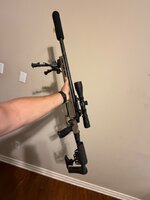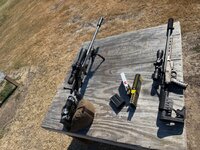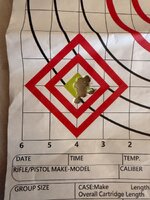Unclecroc
Lil-Rokslider
- Joined
- Jun 22, 2020
You’re not alone. I too have a love affair with the 25-06, I own two now if I’m always looking for another.A few observations after 38 seasons of hunting in the southeastern US….
- started with a 30-30, deer fell down
- used a 25-06 next, like a lightning bolt
- moved to a 270 as my first “real rifle” deer fell down fine but had some growing pangs up close with high velocity lighter bullets. Still have soft spot for 270
- had to change to 30-06 because it’s totally necessary for deer. No flies at all on it but it came at a cost in recoil
*Note* recoil went up exponentially each step
- became a father so had to get a “light recoiling rifle” for the kids (you know, light recoiling only works for women and kids, right?) so bought a Handirifle in 223 and shot Barnes 55gr bullets. Deer fell down, somewhat questionable blood trails with not perfect shots but that’s not caliber specific
- bought a 243 for kiddos cause we needed something bigger but low recoil. Deer still died
- kinda settled on 7-08/308 and pretty well stopped here for 15 years. Very tolerable recoil and excellent killers
- bought a 7.62x39 RAR for cheap practice ammo. Kills deer just fine
I said all of that, taking the long way around, because reading this thread got me to thinking… most of the “failures” I’ve had or experienced were directly related to two things: poor bullet selection or crap shoots in poor locations. No doubt that a good bullet in the right spot most definitely kills anything alive. That is not debatable. The correct bullet construction makes all the difference.
Personally, I have a secret love affair with the 25-06 for all of its attributes but mainly it kills like lightning and has very low recoil. I am waiting to see what happens on a 25 creed because that’s where I really want to be. If not, I’m thinking 6ARC is probably my next rifle. I’m just like everyone else, I shoot much better with low recoil, shoot more often, and being able to see stuff through the scope as it happens is pretty awesome.
Carry on. Just an observation
I dare say it’s the perfect deer cartridge.



